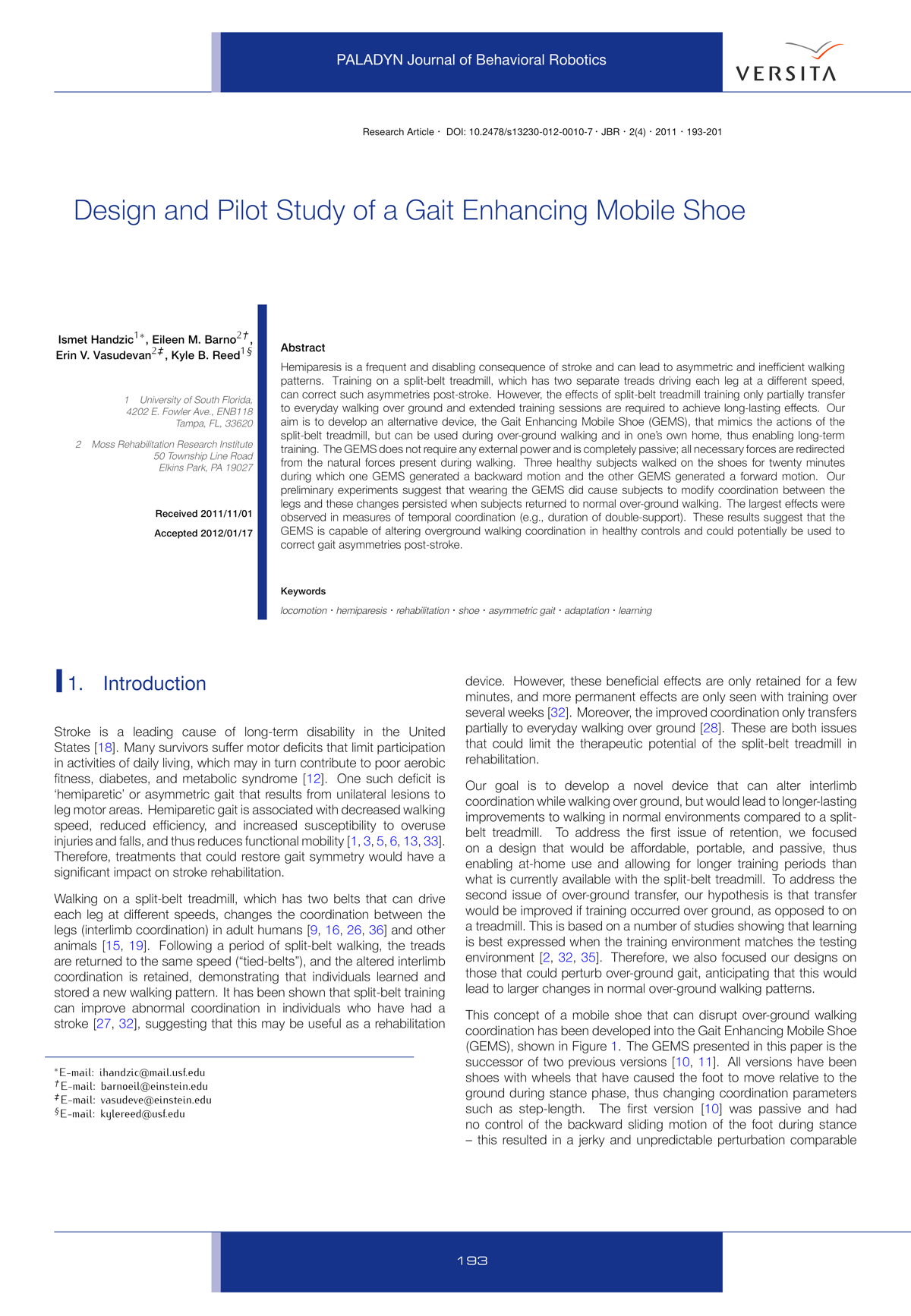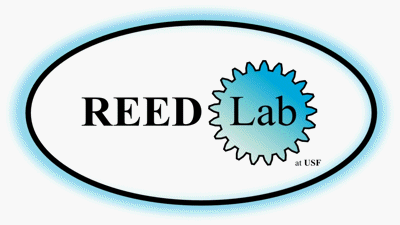Design and Pilot Study of a Gait Enhancing Mobile Shoe
Abstract - Hemiparesis is a frequent and disabling consequence of stroke and can lead to asymmetric and inefficient walking patterns. Training on a split-belt treadmill, which has two separate treads driving each leg at a different speed, can correct such asymmetries post-stroke. However, the effects of split-belt treadmill training only partially transfer to everyday walking over ground and extended training sessions are required to achieve long-lasting effects. Our aim is to develop an alternative device, the Gait Enhancing Mobile Shoe (GEMS), that mimics the actions of the split-belt treadmill, but can be used during over- ground walking and in one’s own home, thus enabling long-term training. The GEMS does not require any external power and is completely passive; all necessary forces are redirected from the natural forces present during walking. Three healthy subjects walked on the shoes for twenty minutes during which one GEMS generated a backward motion and the other GEMS generated a forward motion. Our preliminary experiments suggest that wearing the GEMS did cause subjects to modify coordination between the legs and these changes persisted when subjects returned to normal over-ground walking. The largest effects were observed in measures of temporal coordination (e.g., duration of double-support). These results suggest that the GEMS is capable of altering overground walking coordination in healthy controls and could potentially be used to correct gait asymmetries post-stroke.
[ preprint or pdf from SpringLink ]

| 




